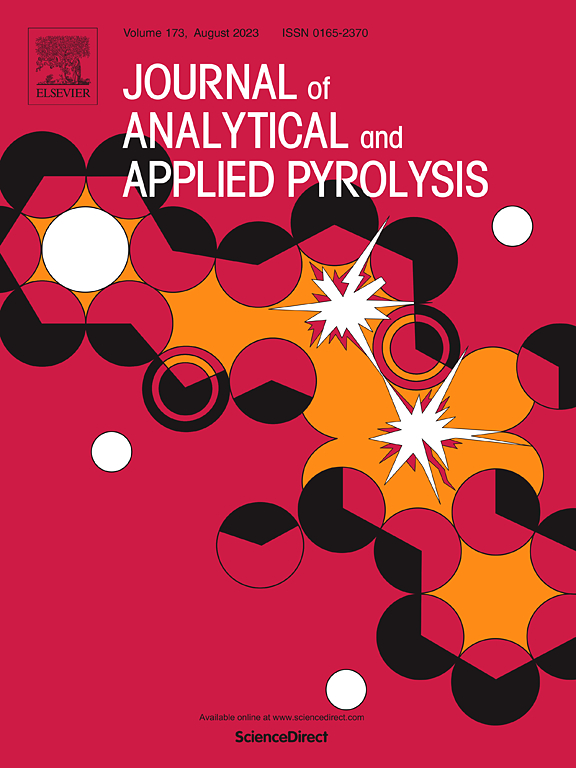Study on the aging behavior and mechanism of nitrile rubber composites in combined radiation-thermal environments
IF 5.8
2区 化学
Q1 CHEMISTRY, ANALYTICAL
引用次数: 0
Abstract
This contribution investigates the aging property changes and mechanism of nitrile rubber (NBR) under the combined radiation-thermal environments in the N2 atmosphere. Aging resulted in a decrease in elongation at break from 309.01 % to 64.74 %, an increase in modulus of elasticity from 3.84 MPa to 9.09 MPa, and a slight increase in thermal stability. The crosslink density increases and the mass loss of the sample is reduced, while the chemical structure of the sample surface is almost intact. By gas-phase infrared spectroscopy, the irradiation aging-induced gases from NBR were also analyzed, including CO2, CO, and alkanes (CH4, C2H6, C3H8). This indicates that chain scission and pendant group removal also take place, whereas chain breaking primarily occurs at the macromolecular chain end. The above degradation reactions and the decomposed additives account for the generated trace amount of small molecule gas products. These findings suggest that the primary aging mechanisms of NBR are the cross-linking of macromolecular chains and additive loss. Furthermore, radiation and thermal have a synergistic effect on NBR aging, and this effect has a threshold temperature that is clearly between 50 °C and 70 °C. The synergistic effect of additive cleavage is only apparent at temperatures above 65 °C under radiation-thermal conditions.
丁腈橡胶复合材料在辐射热联合环境中的老化行为和机理研究
这篇论文研究了丁腈橡胶(NBR)在 N2 大气中的辐射热联合环境下的老化特性变化及其机理。老化导致断裂伸长率从 309.01 % 下降到 64.74 %,弹性模量从 3.84 兆帕增加到 9.09 兆帕,热稳定性略有提高。交联密度增加,样品的质量损失减少,而样品表面的化学结构几乎保持不变。通过气相红外光谱,还分析了 NBR 的辐照老化诱导气体,包括 CO2、CO 和烷烃(CH4、C2H6、C3H8)。这表明,链的断裂和悬垂基团的脱除也会发生,而链的断裂主要发生在大分子链的末端。上述降解反应和分解的添加剂是产生微量小分子气体产物的原因。这些发现表明,丁腈橡胶的主要老化机制是大分子链的交联和添加剂的损失。此外,辐射和热对丁腈橡胶的老化具有协同效应,这种效应的临界温度明显介于 50 °C 和 70 °C 之间。在辐射热条件下,添加剂裂解的协同效应只有在温度高于 65 °C 时才会显现。
本文章由计算机程序翻译,如有差异,请以英文原文为准。
求助全文
约1分钟内获得全文
求助全文
来源期刊
CiteScore
9.10
自引率
11.70%
发文量
340
审稿时长
44 days
期刊介绍:
The Journal of Analytical and Applied Pyrolysis (JAAP) is devoted to the publication of papers dealing with innovative applications of pyrolysis processes, the characterization of products related to pyrolysis reactions, and investigations of reaction mechanism. To be considered by JAAP, a manuscript should present significant progress in these topics. The novelty must be satisfactorily argued in the cover letter. A manuscript with a cover letter to the editor not addressing the novelty is likely to be rejected without review.

 求助内容:
求助内容: 应助结果提醒方式:
应助结果提醒方式:


